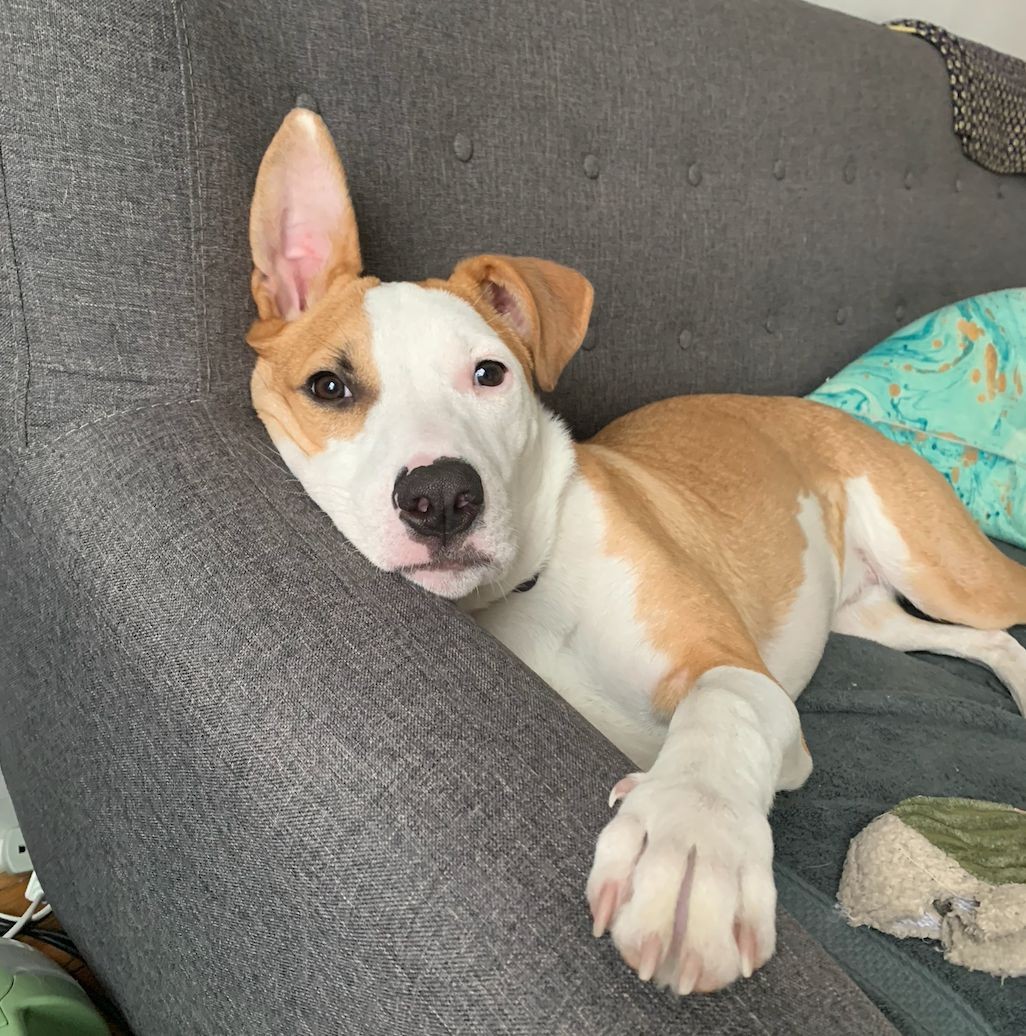It’s a common assumption: dogs love being petted. We often see images of happy dogs being stroked and cuddled, reinforcing the idea that physical affection is universally welcomed by our canine companions. Think peanut butter and jelly, He-Man and She-Ra – dogs and petting just seem to go together, right?
Well, not always.
In a recent episode of HuffPost’s podcast “Am I Doing It Wrong?”, hosts Raj Punjabi and Noah Michelson spoke with Dr. Emily Levine, a board-certified veterinary behaviorist and owner of the Animal Behavior Clinic of New Jersey, to delve into this very question. The surprising answer? Many dogs simply tolerate petting rather than genuinely enjoying it.
 Jumanji AKA Jumi, tolerates petting like a champ, according to "Am I Doing It Wrong?" co-host Noah Michelson.
Jumanji AKA Jumi, tolerates petting like a champ, according to "Am I Doing It Wrong?" co-host Noah Michelson.
Dr. Levine explained, “Many dogs really don’t find being pet and hugged and kissed particularly nice — they just don’t enjoy it very much.” While some dogs may seem to enjoy initial greetings or a good butt scratch, especially when excitement is high, their true feelings about prolonged petting might be different. “When you really watch a dog’s body language when they’re hanging out and doing their own thing, most of them are just tolerating [being petted] at best,” she added. Some dogs even become frustrated and annoyed, resorting to growling as a way to communicate their discomfort and request space.
This might come as a surprise to many dog lovers. We often project our human understanding of affection onto our pets. While some dogs genuinely enjoy physical touch, it’s crucial to recognize that not all dogs are the same, and our interpretation of “affection” might not align with theirs.
Human Culture vs. Dog Culture: Understanding the Clash
So, if our beloved furry friends aren’t always thrilled about our petting attempts, should we stop altogether? Dr. Levine sheds light on the cultural differences between humans and dogs. “This is where we have a little bit of a culture clash — human culture and dog culture.” We cherish our dogs and naturally want to express our affection physically. Dr. Levine suggests that if a dog is merely tolerating petting and isn’t showing signs of anxiety or aggression (such as tucked tail or ears back), it might be acceptable in moderation. She likens it to hugging a teenager – sometimes, it’s a parent’s expression of love that they simply have to endure. “So I don’t think it’s a terrible thing to pet and hug and kiss your pet if they tolerate it.”
However, there are clear boundaries. Petting should absolutely be avoided when a dog exhibits signs of anxiety or aggression as a way to signal “STOP.” Dr. Levine emphasizes, “If it clearly makes them anxious or if they’re using aggression as a strategy to say, ‘STOP’… If we ignore the early signs — the growl, let’s say — then the dogs sometimes feel they have to escalate their message. Fair enough, because we aren’t getting it.” Ignoring these early warning signs can lead to increased stress and potentially escalate a dog’s negative reactions.
Alternative Affection: What Dogs Might Prefer
Hugging, in particular, can be misinterpreted by dogs. Dr. Levine points out that it can make them feel trapped or suffocated. So, what are better ways to show affection that our dogs might actually appreciate?
She recommends focusing on areas like the cheek and chin for petting, suggesting we “avoid going along down the back.” Keeping petting sessions brief can also be beneficial. It’s about quality over quantity. Prioritize meaningful interactions that your dog genuinely enjoys.
Furthermore, physical affection shouldn’t be the sole basis of your relationship with your dog. “It’s a relationship we have with our dogs — there’s always give and take — so as long as [petting] is not the only thing you ever do with your dog, let’s make sure they’re getting time to play, or getting time to do things they find enjoyable.” Engage in activities your dog loves, such as playing fetch, going for walks, training, or simply allowing them to explore and sniff in a safe environment.
Reading Your Dog’s Body Language: The Key to Understanding
Ultimately, understanding whether your dog enjoys being petted comes down to learning their language – their body language. Dr. Levine stresses, “They’re constantly telling us how they feel. We just have to learn how to read it.” She reassures dog owners that it’s not innate knowledge and encourages learning. “We’re not born knowing that — no dog owner should feel guilty about not knowing how to read their dog. But there are lots of resources — body language videos and other resources — where you can learn how they are communicating … It’s the best thing really that a dog owner can do, to really get to know their dog, learn how they speak, because they’re speaking all the time.”
By becoming attuned to canine body language, we can better understand our dogs’ preferences and ensure our interactions are positive and respectful. Look for signs of relaxation like a loose body, relaxed mouth, and soft eyes when petting. Conversely, watch for signs of discomfort such as lip licking, yawning, turning away, whale eye (showing the whites of their eyes), stiff body posture, or growling. These signals indicate that your dog is not enjoying the interaction and would prefer you to stop.
Learning to understand your dog’s communication is essential for building a stronger, more trusting relationship and ensuring their well-being. It’s about moving beyond our human-centric view of affection and appreciating our dogs for who they are, respecting their individual preferences and communication styles. By doing so, we can create a truly enriching and enjoyable companionship for both ourselves and our beloved canine friends.